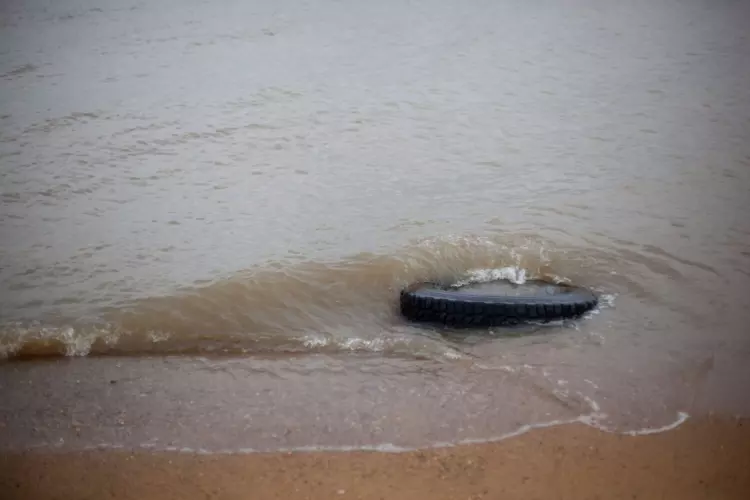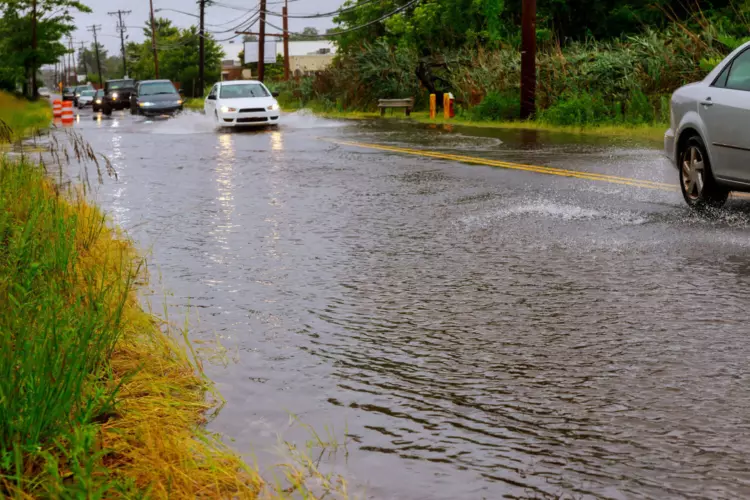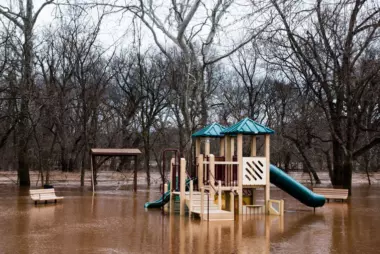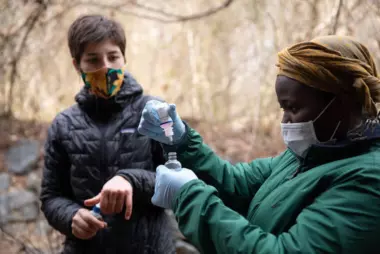Protecting Your Infrastructure Through Stormwater Resilience
Managing stormwater runoff and increasing stormwater resilience can mitigate flooding and flood-related damages to local infrastructure. Stormwater runoff can carry bacteria and other pollutants into waterways used for drinking water, fishing, swimming and other recreational activities. This module explains how to protect your community by planning for climate conditions and the risks of stormwater runoff.
Preview presentation and download files
Downloads
Presentations and Fact Sheets
Presentation Assets
Video for Protecting Your Infrastructure Through Stormwater Resilience
In this topic you will learn
-
What is stormwater and how can it be dangerous to my community?
-
What can I do to mitigate flood-related damages?
-
How will future climate conditions impact infrastructure?
Downloads
Presentations and Fact Sheets
Presentation Assets
Highlights
Education
Excess stormwater runoff can cause flooding and other damage to school buildings, leading to extended closures and missed school days. Excess runoff can also disrupt bus routes and impact internet access that is needed for schoolwork.
Economic Development
Flooding harms businesses, damages private property and threatens the health of local waterways, which often support tourism and outdoor recreation.
Public Health and Safety
Stormwater runoff picks up litter, toxic contaminants, nutrients, sediment and other pollutants as it passes over the land. These pollutants are typically discharged directly into local waterways, without having been treated.
Infrastructure Maintenance and Finance
Flooding endangers critical community infrastructure, including roads, bridges, power lines, cellular phone service and access to drinking water.
Case Studies You'll Find Inside
Henrico County
Henrico County, VirginiaMonitoring Cooperative Identifies Public Health Threat
Participants in the Chesapeake Monitoring Cooperative found high levels of E. coli bacteria in a local waterway. Geese and other wildlife were suggested to be the source. The following spring, monitors discovered high levels of bacteria again. They contacted local government agencies a second time, and the Public Works Department was able to track the pollution to a pet daycare center that was improperly disposing of pet waste. The Department of Public Utilities worked with kennel management to educate employees and establish waste disposal techniques to eliminate this clean water threat.

Pennsylvania
PennsylvaniaLocal and State Governments Absorb Costs of Flood Damage
In 2018, the Pennsylvania Emergency Management Agency documented over $160 million in public infrastructure flood damages—only $62 million of which was covered by federal disaster aid. Federal disaster relief was limited because no single storm event met federal disaster threshold criteria. The remaining costs were absorbed by municipalities, counties and state agencies.

Claud E. Kitchens Outdoor School
Clear Spring, MarylandRain Garden Diverts Runoff, Advances Education
The Claud E. Kitchens Outdoor School was experiencing flooding on its front lawn, driveway and at the building entrance, which created dangerous ice in the winter. A $10,000 under-road culvert was proposed as a solution. Instead, the school used a $5,000 grant from the National Fish and Wildlife Foundation and Chesapeake Bay Trust to install a rain garden, which diverts runoff from rain events and serves as an outdoor teaching tool.

Binghamton
Binghamton, New YorkWetlands Catch Flood Water
After record-breaking floods in 2005 and 2011 caused $675 million in property damage, Binghamton set its sights on building back stronger and more resilient. One of over 170 flood mitigation projects—funded through federal agencies, municipalities, school districts, and community development block grants—involved building a wetland at a highway interchange to catch and absorb flood water.

Norfolk
Norfolk, VirginiaPreparing for Weather Extremes
In 2018, Norfolk, Virginia, adopted a zoning ordinance that directs new and more intense development to be built on higher ground. In an effort to mitigate the impacts of sea level rise, the ordinance established a Coastal Resilience Overlay zone, wherein development must meet new flood resilience requirements, and an Upland Resilience Overlay zone, designed to encourage development in areas of the city at lower risk of flooding.

Annapolis
Annapolis, MarylandPlanning for Higher Waters
In 2017, sunny day flooding cost Annapolis businesses an estimated $86,000 to $172,000 in lost revenue due to nearly 3,000 fewer visitors to historic downtown. Even after flood waters receded, the decrease in patrons remained.

Here's How You Can Help
Learn More About This Topic
Access interactive lessons, case studies, practitioner interviews and more to help you communicate about, build and enhance your local stormwater program.
Learn about nature-based solutions for flooding, erosion and other hazards, and use case studies to determine which tools may work best for you.
Learn how climate risks will impact your community.
Learn how stormwater runoff affects the Chesapeake Bay.
Connect with stormwater professionals from across the Chesapeake Bay watershed and access technical resources, training opportunities, regulatory updates and stormwater alerts.



